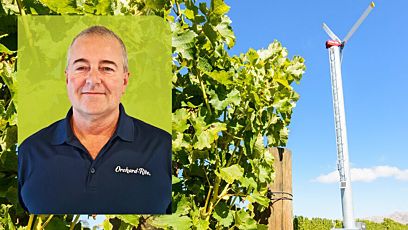

Our Wine Grape Knowledge
We work closely with NZ Winegrowers and their subsidiary bodies ‘Sustainable Winegrowing New Zealand’ (SWNZ) and ‘Bragato Research Institute’ (BRI) to drive initiatives that enable our clients to achieve sustainable wine grape production and wine making.
We also recently celebrated receiving the Brand Reputation through Compliance of Global Standards (BRCGS), formerly known as the British Retail Consortium, for our Blenheim store and have worked with suppliers and industry to drive recycling efforts.
Our Growers | The Pyramid
The Pyramid is a multi-faceted farming business currently comprising of 602 hectares within the boundaries of the Avon, Tummil and Waihopai rivers in Marlborough. The first vineyard block was created five years ago and brings a European feeling to the hills of Marlborough...
Our Growers | Rose Ag Vineyards
Rose Ag is a family-owned and operated Vineyard located in the Wairau Valley. Producing and exporting Savignon Blanc and some Pinot Noir, Vineyard manager Shane Day speaks about the support they recieve from Fruitfed Supplies through his Technical Horticultural Representative, Mike Treloar and the local Crop Monitoring team.
Wine Grape Tech-Know Tips For April


- With many blocks having been harvested, endeavour to maintain a healthy canopy for as long as possible. Following harvest, leaf function changes to storing nutrients for next season. Adequate water and a healthy canopy assist this vital process when carbohydrates are stored in preparation for next season, especially in high-cropping varieties.
- Nitrogen is essential in this process, along with phosphorus and potassium, and can be applied as foliar sprays or ground application through fertigation. Precise crop requirements vary from site to site and cropping level. Yara N 400 is a flexible nitrogen option, providing both ammonium and nitrate nitrogen, and suits both application methods. For other nutrient requirements, speak with your local Fruitfed Supplies Technical Horticultural Representative for advice on the most appropriate products and rates for your situation.
- Assess insect pests during harvest and through into late season, particularly mealybug numbers and signs of leafroller damage. This data allows the assessment of the effectiveness of this season’s insecticide programme and to plan any changes for spring applications. The Fruitfed Supplies Crop Monitoring Team can assist with this process.
*ACVM registration numbers apply. Read registered label before use.


- If temperatures are mild and humidity is high, mealybug numbers may increase. If monitoring indicates control is needed, Movento is effective with a systemic mode of action. Timing of application is important. Ideally, apply in cool, overcast conditions for maximum efficacy. Movento has a 90 day pre-harvest interval.
*ACVM registration numbers apply. Read registered label before use.



